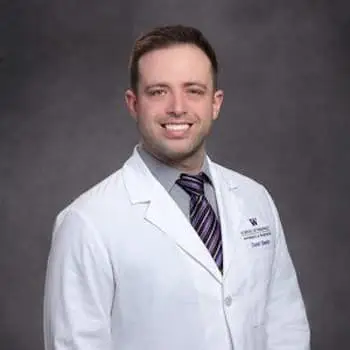Fentanyl, America’s deadliest drug, has made recovery from substance addiction more urgent than ever before. Here are the facts about withdrawal and detox from fentanyl.
Fentanyl has recently gained attention as a synthetic opioid that is much more potent than other opioids, including heroin. These drugs have contributed directly to the nationwide opioid crisis, which has devastated both small and large communities across America.
Here is how intravenous (IV) fentanyl stacks up compared to similar opioids:
- Codeine, oral: 4,000 times more potent
- Morphine, oral: 1,200 times more potent
- Hydrocodone, oral: 400 times more potent
- Oxycodone, oral: 200 times more potent
In medicine, potency is a comparison of how much of each substance is needed to accomplish the same thing. For example, 1 mg of fentanyl will have the same pain-killing effects as 4000 mg of codeine.
Treatment Can Be Life Changing. Reach out today.

This property can be incredibly useful in certain circumstances. If someone is going into surgery, it is easier and safer to inject 0.1 mg of fentanyl than make someone drink 400 mg of codeine. Fentanyl’s potency also means it tends to work faster.
Like all opioid drugs, fentanyl is very addictive. Fortunately, fentanyl treatment and rehab programs are already in place, as pre-existing opioid treatment programs are capable of performing fentanyl addiction treatment.
Fentanyl Addiction Treatment and Rehab Options
The property that makes fentanyl so useful in a hospital setting is unfortunately what makes it ideal for misuse. Higher potency means less product to store and transport for drug dealers. Compared to similar opioids like oxycodone and hydrocodone, dealers can charge the same amount for much less of the substance. A small bag of fentanyl can replace a whole bottle of pills.
For people who need fentanyl addiction treatment, any opioid treatment program (OTP) is already equipped to handle the complex nature of fentanyl rehab.
Fentanyl Addiction Treatment Options
Choosing a Rehab Center for Fentanyl Addiction
If you or someone you know is considering inpatient treatment, consider several factors when making a choice. Many people try to dive into rehab headfirst without asking the right questions and without knowing how to choose a rehab center. Here are some factors to consider:
- Location: People who want family and friends involved may consider inpatient drug rehab nearby. However, some people prefer a more private experience, and inpatient rehab near friends and family could make treatment more difficult.
- Cost: How much does rehab cost? Insured patients should call the number on the back of their insurance to determine if rehab treatment is covered. Cash patients should call the desired clinic to inquire about the cost of inpatient rehab and other types of treatment.
- Treatment options provided: Each rehab center offers different programs and options. Some are outpatient only, some only have inpatient and some have both.
- Staff-to-patient ratio: This ratio is an important consideration that many people do not ask about before entering treatment. A typical nurse-to-patient ratio is one to five. Doctors each tend to care for between 25 to 30 patients.
Paying for Fentanyl Addiction Treatment
Many people wonder about how to pay for drug rehab. Paying for drug rehab depends on each person’s unique situation. Many insurance programs cover rehab treatment, so people should always call their insurance carrier to ask about treatment centers in their network and out-of-pocket costs.
Cash patients may be more limited in their treatment locations. However, many states have free and low-income rehab treatment options available.
Will Insurance Cover Rehab?
Does health insurance pay for rehab? Coverage depends entirely on insurance. An insurance company should provide a phone number on the back of the insurance card to call a benefits line. Calling this number will usually put a person in touch with an insurance specialist who can answer this question.
Some people will need to know how to pay for drug rehab without insurance. Before a person gets to this stage, they have usually already met with an addiction specialist or social worker who can help them answer this question. Free and reduced-cost rehab options are available in most states.











